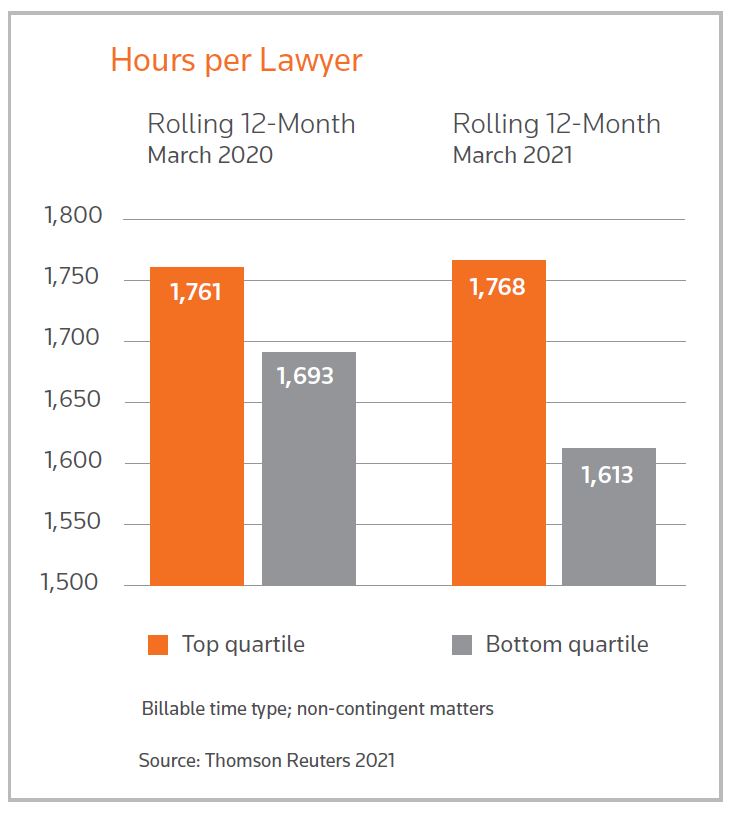In the latest article in "Practice Innovations", we look at how the pandemic may have irrevocably altered how law firms approach talent and staffing
The past year has raised far more questions about the legal talent marketplace than it has answered. As law firms experienced a downturn in demand for legal services, many turned a cautious eye to the question of whether the legal industry would follow the pattern set during the financial crisis of 2007-‘09, which saw massive rollbacks in hiring of young attorneys, coupled with layoffs of both firm attorneys and staff.
Fortunately, the layoffs and furloughs from the pandemic were of much smaller scale, and in many respects have already disappeared.
The legal market in the United States has been fortunate, at least to this point, to have weathered the storm of 2020 better than many would have anticipated when the crisis was still on the horizon. Yet the success experienced in the industry was not enjoyed equally by all law firms. Indeed, some firms stood apart from the crowd, and they can be an excellent source of insights for the rest of the legal industry.
Making of a resilient law firm
The recent 2021 Pandemic Performers report, published recently by the Thomson Reuters Institute, examined a particular population of law firms — those that had experienced the highest growth in revenue per lawyer (RPL) during the first 12 months of the pandemic. The motivation behind the report was to see what set those firms apart both quantitatively and qualitatively. And the findings show that many of the key differences relate to how these firms managed their talent.
More productivity from their lawyers
First, those firms that saw the greatest growth in their RPL numbers also, perhaps unsurprisingly, saw the best performance out of their lawyers in terms of productivity. What is surprising, however, is that these firms not only protected productivity, but actually saw their average lawyer clock an additional seven billable hours per year compared to the same 12-month period one year prior.

In contrast, the law firms that saw the slowest growth in their RPL saw their average per lawyer productivity drop by 80 hours.
Taking advantage of a deep bench
Second, many of the top RPL firms reside within the Am Law 100, typically meaning that they have access to a broad and deep bench of talent, both in terms of their attorney workforce as well as other professional fee-earning staff. It was this latter category that also demonstrated a key differentiator for these high RPL-growth firms.
It was a nearly universal phenomenon during that pandemic that worked hours shifted upwards in a firm’s fee structure — work that would typically be pushed down to a lower-cost timekeeper was instead being done by a partner. But for the high-RPL firms, this was much less of a problem. Within these firms, the proportion of hours worked by other professional fee earners fell by only 0.6% from April 2020 through March 2021; and in fact, the proportion was trending towards normal during the latter part of that period. In contrast, low RPL-growth firms saw their professional fee earners’ proportion of work shrink by nearly double that amount.
A culture equipped for change
Finally, nearly everyone was caught flat-footed with many of the changes that were made necessary by the pandemic. However, our research shows that those firms with the best-performing RPL had also laid the groundwork for a resilient and adaptable workforce well in advance of this sudden shift.
When asked an unprompted question about what they like best about their law firm, 16% of top-performing lawyers at the high RPL-growth firms gave an answer about the independence or freedom they feel. In sharp contrast, no one from the low RPL-growth firms gave this response.
What’s more, nearly 60% of the top-performing lawyers at the high RPL-growth firms reported that they had already been working from home at least one day per week prior to the pandemic, far outpacing any other category of law firm. It’s easier to make the shift to full-time work from home if your firm has already made work-from-home a regular part of the culture.
And speaking of culture, high RPL-growth firms also received high marks in terms of the comfort their lawyers felt in their ability to be themselves at work and the collaborative nature of the culture within the firm.
Lessons for every law firm
The odds of the globe experiencing another pandemic soon are, hopefully, quite slim. However, the odds of some other sort of disaster impacting a law firm’s work are much higher. As law firms prepare for whatever the next disaster might be, it is vital to learn lessons from crises past.
Our research showed that firms would be wise to start with the cultural aspects, encouraging their lawyers to be autonomous problem-solvers who can perform effectively from anywhere. And when a crisis does hit, do not overlook the full spectrum of talent available; the other professional fee-earners at your firm are not only a vital source of leverage, but also of expertise and scale.
Perhaps the greatest takeaway to be learned from the high RPL-growth firms of the past year is the importance of building a working environment that is geared for resiliency.







